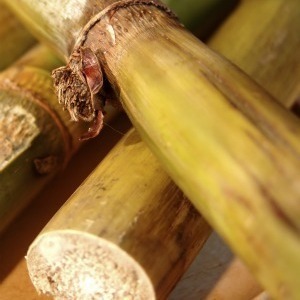UNICA: Sugarcane mills continue to prioritize ethanol production

October 17, 2014
BY Erin Krueger
UNICA, the Brazilian sugarcane industry association, has announced the south-central region of Brazil experienced a smaller than average crush during the second half of September. However, more than 60 percent of the cane that was processed went toward ethanol production.
The crush during the second half of the month was the lowest in four years. When compared to the first half of September, it was down 27.83 percent. When compared to the same period of last year, it was down 15.4 percent.
The region crushed 68.76 million tons of sugarcane during the month of September, down 10.9 percent from last year. UNICA Technical Director Antonio de Padua Rodriques attributed the reduction to rains that occurred at the end of the month, which disrupted harvest operations.
Advertisement
Advertisement
From the start of the season through the end of September, UNICA has reported the can crush totaled 441.54 million tons. Approximately 442.61 million tons was processed during the same period of last year.
Ethanol production totaled 1.57 billion liters (414.75 million gallons) during the second half of September, down slightly from the 1.6 billion liters produced during the same period of last year. That volume included 635.06 million liters of anhydrous ethanol and 932.29 million liters of hydrous ethanol. According to UNICA, hydrous ethanol is the only product among derivatives of sugarcane to show greater production during the period than last year.
While sugar production for the second half of September dropped 28.84 percent compared to the same period of 2013, the sugarcane crush dropped only 15.4 percent and ethanol production dropped only 2.18 percent.
Advertisement
Advertisement
Ethanol sales by south-central producing units totaled 2.09 billion liters in September, down from 2.25 billion liters last year. The drop is attributed to a reduction in volumes for export, which totaled only 97.68 million liters. Ethanol sales to the domestic market were up 2.43 percent, reaching 1.99 billion liters.
From April through September, ethanol sales totaled 12.07 billion liters, including 6.74 billion liters of hydrous ethanol and 5.33 billion liters of anhydrous ethanol. Of that volume, 11.33 were supplied to the Brazilian domestic market and 740.57 million liters were exported.
According to UNICA, 10 mills in the south-central region have already wrapped up the 2014-’15 season. Last year, only two mills had wrapped up the season by the same time.
Related Stories
The U.S. exported 31,160.5 metric tons of biodiesel and biodiesel blends of B30 and greater in May, according to data released by the USDA Foreign Agricultural Service on July 3. Biodiesel imports were 2,226.2 metric tons for the month.
CARB on June 27 announced amendments to the state’s LCFS regulations will take effect beginning on July 1. The amended regulations were approved by the agency in November 2024, but implementation was delayed due to regulatory clarity issues.
Legislation introduced in the California Senate on June 23 aims to cap the price of Low Carbon Fuel Standard credits as part of a larger effort to overhaul the state’s fuel regulations and mitigate rising gas prices.
The government of Brazil on June 25 announced it will increase the mandatory blend of ethanol in gasoline from 27% to 30% and the mandatory blend of biodiesel in diesel from 14% to 15%, effective Aug. 1.
The U.S. EIA reduced its 2025 and 2026 production forecasts for a category of biofuels that includes SAF in its latest Short-Term Energy Outlook, released June 10. The forecast for 2025 renewable diesel production was also revised down.
Upcoming Events









